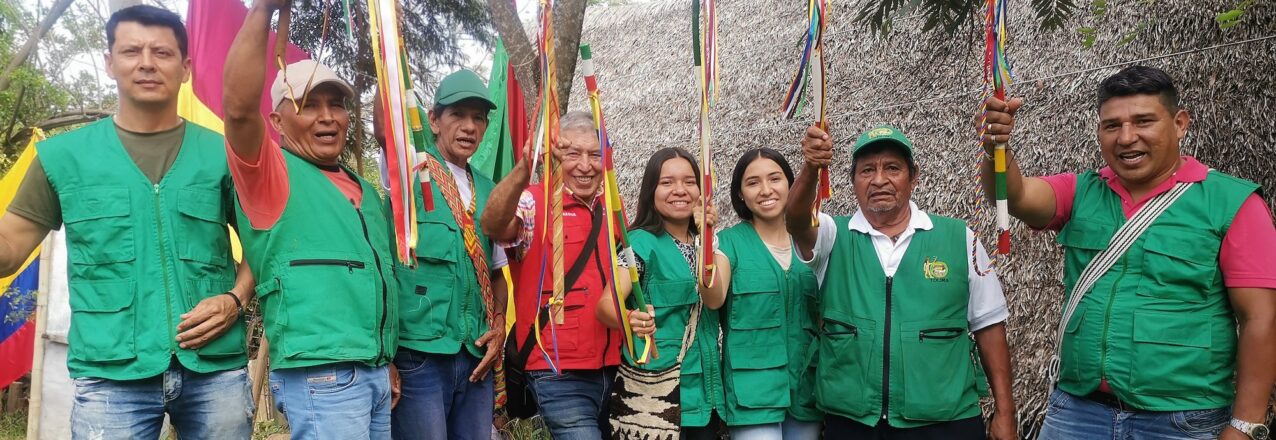USAID is giving indigenous Pijao communities in Chaparral, Tolima the opportunity to participate in land administration initiatives.
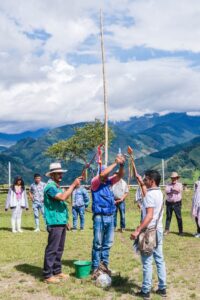 Eleven ethnic Pijao communities in the municipality of Chaparral, Tolima, took part in Free, Prior, and Informed Consent (FPIC) sessions and agreed to participate in the implementation of Rural Property and Land Administration Plan (POSPR) being carried out by USAID Land for Prosperity with support from the Colombian government.
Eleven ethnic Pijao communities in the municipality of Chaparral, Tolima, took part in Free, Prior, and Informed Consent (FPIC) sessions and agreed to participate in the implementation of Rural Property and Land Administration Plan (POSPR) being carried out by USAID Land for Prosperity with support from the Colombian government.
The FPIC process is a preliminary step to ensure that the indigenous groups, which represent an estimated 2,500 people, understand the process of surveying land, formalizing property, and resolving a variety of land conflicts in the municipality. Among these objectives, the POSPR gives indigenous groups the chance to meaningfully participate in the process. This includes the opportunity to create or increase coverage of their collective territories, known in Spanish as resguardos.
Each of the 11 Pijao communities varies in terms of their relationship with collective lands and the status as indigenous group. Some communities, such as Matora de Maito, consist of dozens of families living dispersed throughout the mountainous municipality, with no sizable collective landholdings. Some of the Pijao communities have yet to achieve official designation by Colombia’s Ministry of Interior, while others live on resguardos that overlap with the Las Hermosas National Park high in the Andes.
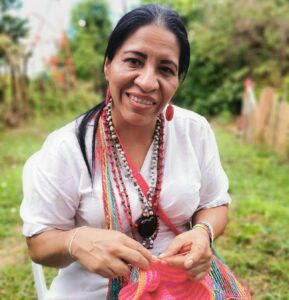 “This is a great opportunity for indigenous communities to advance the process of establishing collective landholdings, strengthen our family bonds, and ensure the persistence of the Pijao culture,” says Maria Ximena Figueroa, Pijao social leader from the Matora de Maito Pijao community.
“This is a great opportunity for indigenous communities to advance the process of establishing collective landholdings, strengthen our family bonds, and ensure the persistence of the Pijao culture,” says Maria Ximena Figueroa, Pijao social leader from the Matora de Maito Pijao community.
In Colombia, FPIC is a right that indigenous and Afro-descendant communities have to say yes or no to any proposal that could affect their territory or social structure. The FPIC process supported by USAID is inclusive and participatory and demonstrates an intercultural dialogue around land and territory.
During the FPIC process, Land for Prosperity (LFP) staff held events on Saturdays and Sundays to increase participation and invited all members of the communities. LFP presented the POSPR process, and how it affects private landowners and indigenous communities. It also opened up dialogue with members, allowing the community to ask questions about the intention of the local and national government agencies.
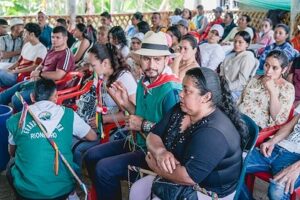 “There is confusion in the community around land formalization, ranging from ideas that the government is coming to take our land to ideas that the government is finally making reparations,” says Luis Fernando Guerrero, the current governor of Matora de Maito.
“There is confusion in the community around land formalization, ranging from ideas that the government is coming to take our land to ideas that the government is finally making reparations,” says Luis Fernando Guerrero, the current governor of Matora de Maito.
At the end of each session, the communities vote, and if they agree, sign a protocol with LFP and delegate a spokesperson, or in some cases, a guía ancestral (ancestral guide) for the entire process. Implementation of POSPR in Chaparral is expected to take place over the next 18 months. During the process, teams of legal, land, and social experts will continue meeting with Pijao leaders and community members to survey their collective lands and present requests to the National Land Agency.
Identifying Land Use
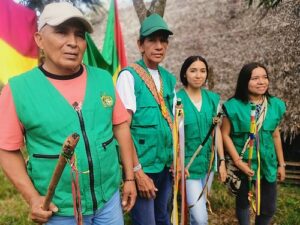 In 2010, Matora de Maito purchased a three-hectare parcel to build their maloca, or community meeting center, near the urban center of Chaparral. “The problem is that we still don’t own a larger piece of collective land where we can work together and use the land the way we always have,” explains the group’s governor, Luis Fernando Guerrero.
In 2010, Matora de Maito purchased a three-hectare parcel to build their maloca, or community meeting center, near the urban center of Chaparral. “The problem is that we still don’t own a larger piece of collective land where we can work together and use the land the way we always have,” explains the group’s governor, Luis Fernando Guerrero.
The implementation of POSPR is a strong departure from purely titling land parcels. The exercise has multiple objectives and allows the government to collect information on types of properties, land usage, and the number of landless farmers for agrarian reform, i.e. the redistribution of land. For indigenous communities, the POSPR can be useful to identify lands for ethnic territories.
“We expect this process to help the Colombian Government understand how much land there is and which land can be used for cultivation and which lands we need to protect with conservation initiatives, like forests and water,” says Pijao social leader Maria Ximena Figueroa Olaya.
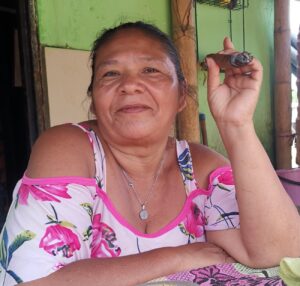 “We all want a collective territory where we can record our own history and leave a legacy for our children. Our communities need assistance with the application for a resguardo.” says José Walter Cano, Governor of the Pijaos en Evolución, a group of 26 Pijao families.
“We all want a collective territory where we can record our own history and leave a legacy for our children. Our communities need assistance with the application for a resguardo.” says José Walter Cano, Governor of the Pijaos en Evolución, a group of 26 Pijao families.
“Being Pijao is what unites us. We are united, and we fight for our rights in a pacific manner and not through violence. We are just asking for the opportunity to return to our land to grow our crops and our medicinal plants. These are the things that hold up our communities.” says Maria Luisa Rayo, Governor of the Cañón de Amoyá Pijao community.


